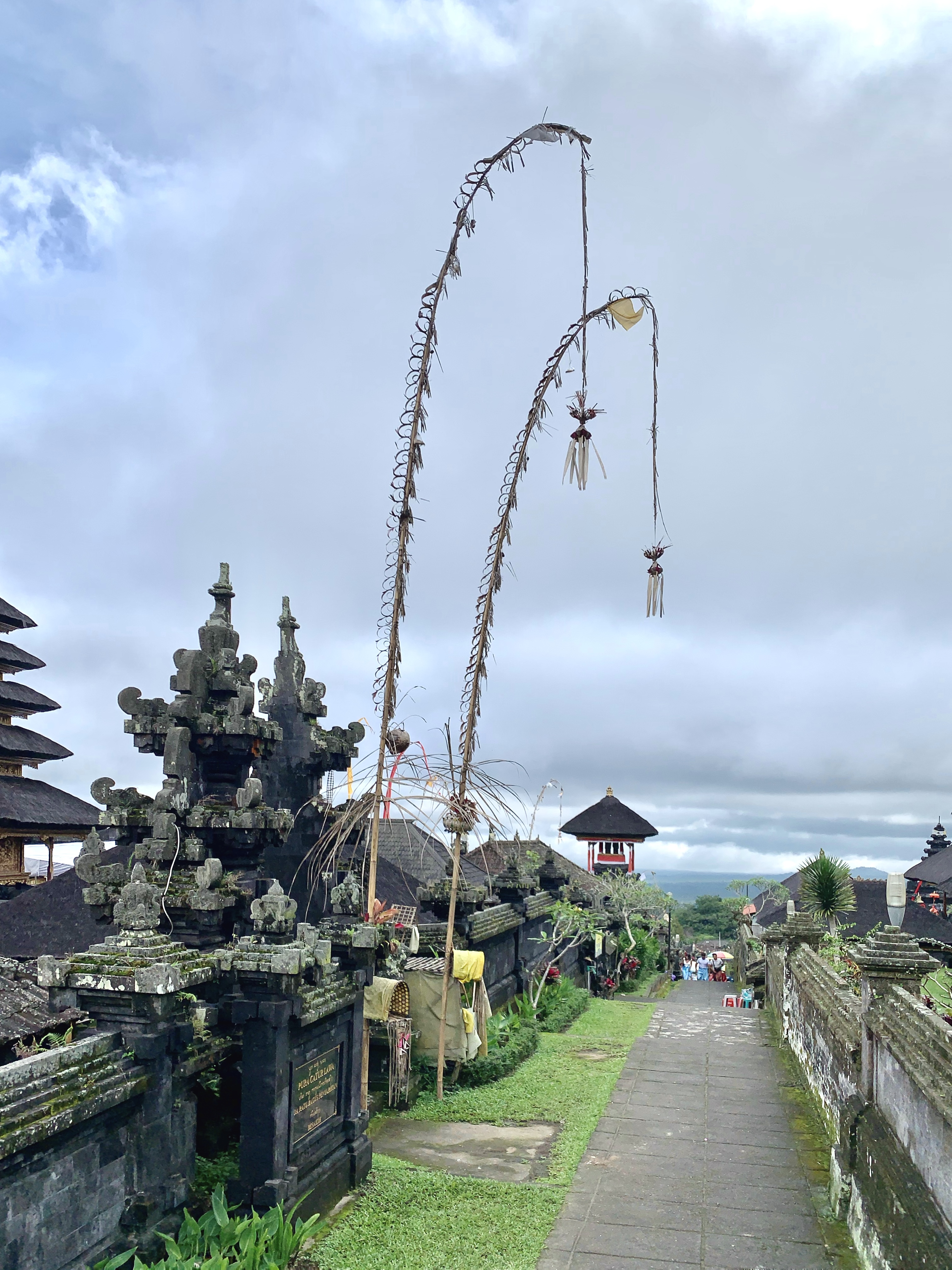|
Penjor
A penjor ( ban, ᬧᬾᬜ᭄ᬚᭀᬃ) is a Balinese Hindu religious symbol of prosperity installed on the day of the Galungan ceremony. Its form is of a tall, decorated bamboo pole and can be seen across Bali year-round in front of homes, compounds and are part of temple anniversary celebrations as well almost every other important religious ceremony and Hindu life-cycle rituals. The poles vary in length but are typically 5-10 meters in height with a distinctive curve near its upper portion. The penjor is said to resemble both the tail of the barong, a symbol of the goodness, and the peak of the sacred mountain Mount Agung. Their decoration schemes range from simple to exquisite using yellow coconut leaves and a variety of other symbolic materials such as pala bungkah (sweet potato) roots, pala gantung (cucumbers, oranges, bananas), pala wija (rice, corn), plawa (leaves), traditional cakes, and coins. Some penjors are created as permanent installations. See also *Bali ... [...More Info...] [...Related Items...] OR: [Wikipedia] [Google] [Baidu] |
Galungan
Galungan is a Balinese holiday celebrating the victory of ''dharma'' over ''adharma''.Eiseman (1989) p353 It marks the time when the ancestral spirits visit the Earth. The last day of the celebration is Kuningan, when they return. The date is calculated according to the 210-day Balinese Pawukon calendar. Significance Galungan marks the beginning of the most important recurring religious ceremonies. The spirits of deceased relatives who have died and been cremated return to visit their homelands, and the current inhabitants have a responsibility to be hospitable through prayers and offerings. The most obvious sign of the celebrations are the ''penjor'' - bamboo poles with offerings suspended at the end. These are installed by the side of roads. A number of days around the Kuningan day have special names, and are marked by the organization of particular activities.Eiseman (1989) p183 Dates Galungan begins on the Wednesday (Buda), the 11th week of the 210-day pawukon calendar. T ... [...More Info...] [...Related Items...] OR: [Wikipedia] [Google] [Baidu] |
Penjor At Besakih
A penjor ( ban, ᬧᬾᬜ᭄ᬚᭀᬃ) is a Balinese Hindu religious symbol of prosperity installed on the day of the Galungan Galungan is a Balinese holiday celebrating the victory of ''dharma'' over ''adharma''.Eiseman (1989) p353 It marks the time when the ancestral spirits visit the Earth. The last day of the celebration is Kuningan, when they return. The date is calc ... ceremony. Its form is of a tall, decorated bamboo pole and can be seen across Bali year-round in front of homes, compounds and are part of temple anniversary celebrations as well almost every other important religious ceremony and Hindu life-cycle rituals. The poles vary in length but are typically 5-10 meters in height with a distinctive curve near its upper portion. The penjor is said to resemble both the tail of the barong, a symbol of the goodness, and the peak of the sacred mountain Mount Agung. Their decoration schemes range from simple to exquisite using yellow coconut leaves and a variety of o ... [...More Info...] [...Related Items...] OR: [Wikipedia] [Google] [Baidu] |
Balinese Hinduism
Balinese Hinduism ( id, Agama Hindu Dharma; Agama Tirtha; Agama Air Suci; Agama Hindu Bali) is the form of Hinduism practised by the majority of the population of Bali.McDaniel, June (2013), A Modern Hindu Monotheism: Indonesian Hindus as ‘People of the Book’. The Journal of Hindu Studies, Oxford University Press, This is particularly associated with the Balinese people residing on the island, and represents a distinct form of Hindu worship incorporating local animism, ancestor worship or ''Pitru Paksha'', and reverence for Buddhist saints or ''Bodhisattava''. The population of Indonesian islands is predominantly Muslim (86%).Indonesia: Religions Encyclopaedia Britannica The island of Bali is an exception where about 87% of its people identify as Hindu (about 1.7% of the total Indonesian population). [...More Info...] [...Related Items...] OR: [Wikipedia] [Google] [Baidu] |
Hinduism In Bali
Hinduism in Indonesia, as of the 2018 census, is practised by about 1.74% of the total population, and almost 87% of the population in Bali. Hinduism is one of the six official religions of Indonesia. Hinduism came to Indonesia in the 1st-century through traders, sailors, scholars and priests. A syncretic fusion of pre-existing Javanese folk religion, culture and Hindu ideas, that from the 6th-century also synthesized Buddhist ideas as well, evolved as the Indonesian version of Hinduism. These ideas continued to develop during the Srivijaya and Majapahit empires. About 1400 CE, these kingdoms were introduced to Islam from coast-based Muslim traders, and thereafter Hinduism mostly vanished from many of the islands of Indonesia. Indonesia has the fourth-largest population of Hindus in the world, after India, Nepal and Bangladesh. Though being a minority religion, the Hindu culture has influenced the way of life and day-to-day activities in Indonesia. Outside of Bali, many ad ... [...More Info...] [...Related Items...] OR: [Wikipedia] [Google] [Baidu] |

